How long does it take for a Ball Python to grow to full size, and is your pet’s growth rate normal? Let’s dive in and find out more…
Adult Ball Pythons take 2 to 4 years to reach full size at the average growth rate. This can be influenced by how much you feed them, their genetic heritage, their sex, and individual personality, however. Aggressive feeders usually grow quickly, whereas as shy, reluctant feeders will take much longer.
Full grown Ball Python female
One thing any keeper will tell you is that females grow generally larger than their male counterparts. The reason behind this is sexual dimorphism.
In a lot of snake species, males do fight – but it’s ritualised combat in the form of wrestling matches rather battles to the death. They don’t have a social hierarchy either, so you won’t see a big, buff male snake protecting a pack of females!
This is true in Ball Pythons, and it means that there isn’t a huge selective pressure to get bigger (by selective pressure, I mean evolutionary pressure). You don’t need to be huge unless you live in the kind of social hierarchy that lions do, for example.
Male pythons aren’t likely to be fighting to protect their ladies, and being smaller actually means that those ladies don’t always have to compete with them for the exact same prey, either. For females, however, there is selective pressure to be larger than males. Not so that they can dominate the males, though they certainly can if they’re in a bad mood.
They don’t increase their temperature like larger pythons, but they do protect from low humidity and other environmental factors.
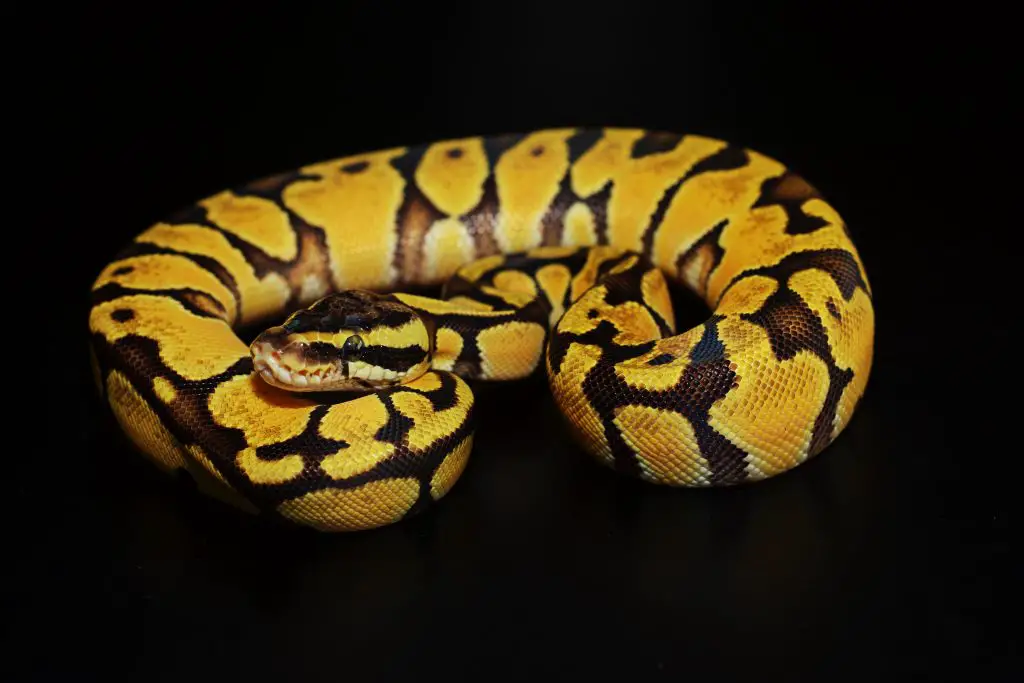
So how long do females take to grow?
It’s also worth remembering that the body as a whole needs to be bigger to accommodate both eggs and internal organs.
This is a general rule of course, and I’ve had small females that get no larger 3-foot total, but it’s an undeniable fact that some adult female Ball Pythons reach 5 foot or more in length. Compare this to the average of 3-3.5ft for males.
Overall, the average for females is 3.5-4.5ft, with the largest recorded ones having reached 5.5 ft. Unsurprisingly, growing larger takes a little longer.
I’d say most females take 3 to 4 years to grow to their full size: occasionally even 5. Of particular importance for their growth is how regularly they eat.
Some females are picky from the start, in which case you should be prepared to try a variety of different enclosures until you find out which one they like the most. You’d be surprised how many Ball Pythons I’ve seen turn into ravenous feeders when moved into a smaller, safer feeling enclosure. Too much space really can make them freak out!

Full grown Ball Python male
As predicted by the sexual dimorphism we discussed above, male Ball Pythons are generally smaller. Some of them may even struggle to reach 3 ft in length, or over 900grams in weight.
These individuals often reach this size by 18 months of age then just seem to stop. That said, they are generally smaller but also more variable in size.
Why this might be is anyone’s guess, but it’s certainly true that some males get much larger than others. One of my males, Prince, is now over 4ft long, putting him way above average.
For a long time, there was a myth that these unusually large, heavy males were lazy and bad breeders. I honestly can’t say where that myth came from, but it definitely isn’t true. Males of all sizes are capable of breeding several times over the course of a year.
When it comes to growth rate, a male can sometimes take as long as 4 years to reach full size, but most reach it by 2 or 3 years, especially if they stay small.
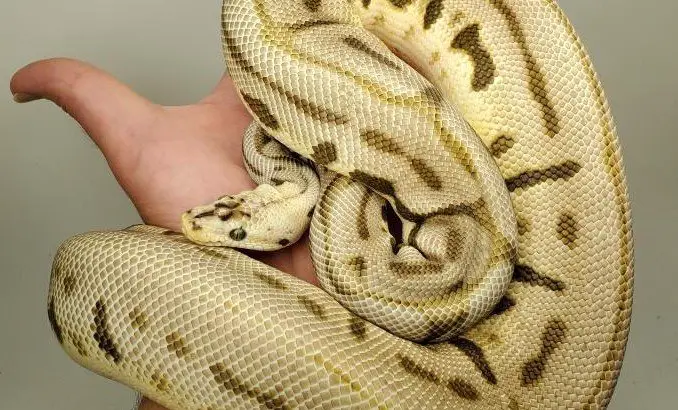
Ball Python length by age
Looking at the table below you can see the average lengths by age for my snakes. This doesn’t give you the full picture, though.
Some of these popular pet snakes get long and slim while reaching full length, then fill out later – especially males. Always take the weight (girth) into consideration when planning their enclosures or buying hiding places.
Ball Python length and weight growth chart
This chart was originally featured in my previous article: How big do Ball Pythons get? It lists average ranges of lengths and weights for male and female ball pythons that I’ve bred and raised over the years. Don’t forget that these are broad averages: if your pet is larger or smaller, but perfectly healthy then there’s nothing wrong with that!
| Age | Length | Weight |
| Hatchling | 10-12in (25-30cm) | 40-70 grams |
| 2 months old | 12-14in (30-40cm) | 90-150 grams |
| 4 months old | 14-18in (35-45cm) | 150-300 grams |
| 6 months old | 18-24in (45-60cm) | 300-600 grams |
| 12 months old | 24-28in (60-71cm) | 600-900 grams |
| 24 months old | 28-36in (71-90cm) | 900-1800 grams |
| 36 months old | 28-48in (71-120cm) | 900-2250 grams |
| Males over 36 months old | 28-42in (71-107cm) | 1200-1800 grams |
| Females over 36 months | 3.5-4.5ft (1.06-1.37m) | 1800-3000 grams |

How long do Ball Pythons live? (And what’s that got to do with growth?)
Like most reptiles, these snakes never stop growing. And they also live for an incredibly long time: often over thirty years for a captive-bred Ball Python.
That said, the bulk of their growth occurs in the first 3 or 4 years of their lives. In fact, most males are fully grown between the ages of 2 and 3 and most females are between the ages of 3 and 4.
After this point, they’ve reached sexual maturity and growth slows down massively. So, if you have a Ball Python hatchling now, don’t expect it to be 12ft long if it lives to the age of forty!
Even the oldest snakes only reach the average size for the species, or slightly over. Once fully grown, they are technically still growing, but at such a slow rate that it is almost imperceptible.

The factors that decide how fast Ball Pythons grow in captivity
Growth is never wholly influenced by just one thing: it’s a phenomenon that involves a complicated mix of factors, most of which I have listed below.
If there all stacked in your pet’s favour it could reach full size in 2 years for a male, or 3 years for a female. If not – the same animal could take until the age of 5 or 6 to be fully grown!
1. Food type
I’ve fed my snakes chicks, mice, multimammate mice, and rats. The best growth rates by far have been with snakes that quickly took to eating rats: even when compared with eating mice of identical weight.
Though mice are ok, three adult mice aren’t equal to one small rat from a nutritional point of view. The explanation for this is that rats have a denser skeleton and musculature than mice, meaning their overall composition is higher in protein and calcium and lower in fat.
Don’t get me wrong, you’ll still have a healthy snake if you feed it mice, but it probably won’t grow as fast as if it was on rats. Note: I always recommend feeding frozen-thawed rather than live rodents: it is safer for your pet, and more humane for its prey.

2. Feeding frequency
Feeding frequency also plays a role. Don’t overfeed your snake but feed it enough! If your new pet snake is climbing the walls for days on end, then it’s probably hungry!
It’s become trendy recently to claim that everyone overfeeds their snakes, and that you should only feed a Ball Python once a month. This just doesn’t fit with animals that vary so much genetically: some will need feeding more than others.
3. Prey size during the first three months
When starting off young Ball Pythons, one of the most common mistakes is feeding them smaller prey items such as mice pinkies. Most babies can take hopper mice as their first prey item, and many breeders are noticing that they prefer prey with fur, that is a little larger than the thickest part of the their body.
It would seem that offering larger prey is the best way to get younger snakes off to a good start. This may go against the advice you see from some “experts” – but it’s true (by “experts” I mean the digital marketers who run the some of the largest reptile sites – but have never kept or bred Ball Pythons).
When caring for you pet, it’s a good idea to listen to reputable breeders and snake owners who have as much experience as possible.
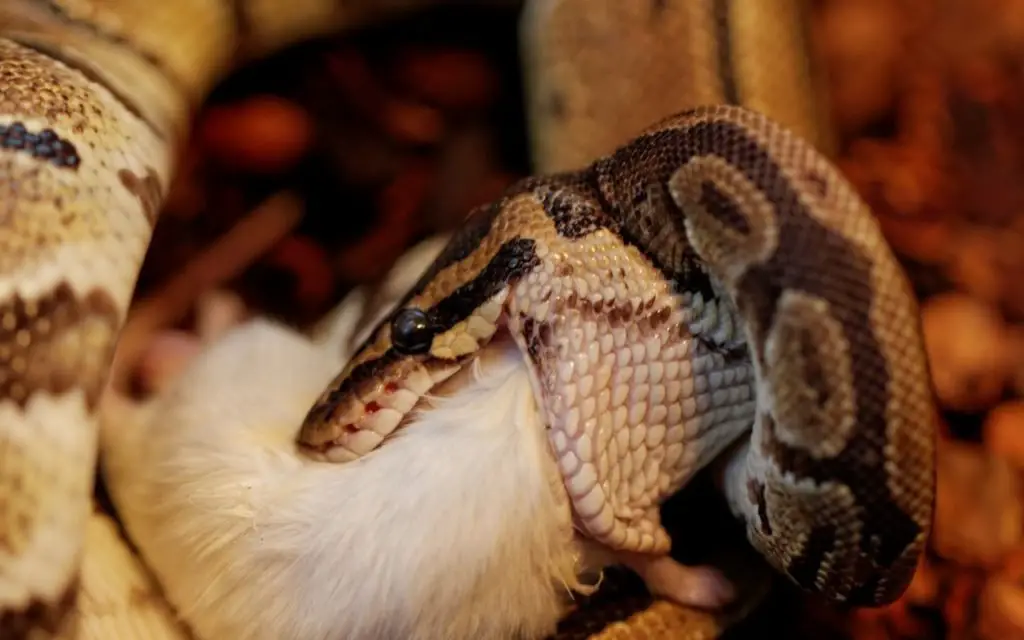
4. Temperature
Temperature affects everything, but most of all metabolic rate. Faster metabolic rate = greater food intake and faster growth.
Always regulate your snake’s temperature with a thermostat (pulse-proportional for heat mats and ceramic heat emitters/dimming for a heat lamp). At the same time, double check the warm spot with a digital thermometer probe placed under the substrate, or by using an infrared thermometer gun.
It is vital for your snake’s growth that it is warm enough! For more on temperatures, check out the heat section in our husbandry guide.
5. Stress
Preventing stress can play a huge role in growth. In reptiles, stress can greatly increase the chances of a number of health issues, from regurgitation to respiratory infections.
In Ball Pythons, stress leads to them refusing to eat, which obviously slows down growth dramatically. As a general rule, its two most common causes are an enclosure that is too large, or excessive handling.
Sometimes, though, there is no stress to be found, and your snake will fast anyway, particularly during the winter months. If you’re sure your husbandry is good, then try not to worry too much.
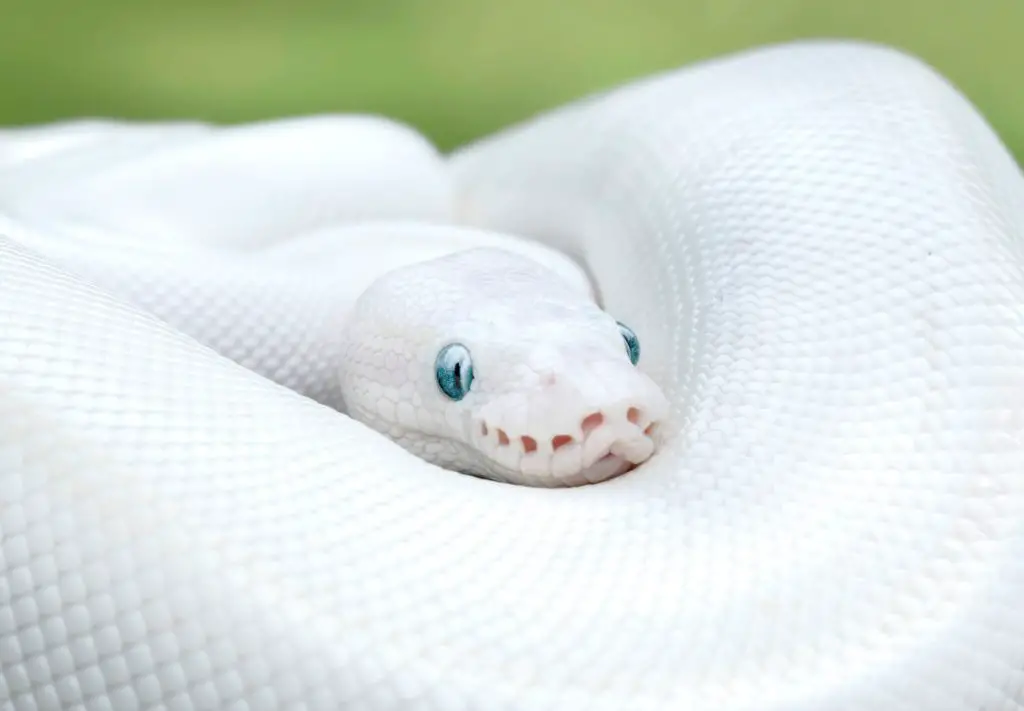
6. Genetic heritage
Adult size is a polygenic trait, meaning that it’s governed by several genes. This is a detailed topic, but what it means in a nutshell is that if both parents were big, there’s a greater chance of a baby growing big.
Likewise, if both parents grew fast, it’s very possible that a baby will grow fast. It’s not set in stone but asking about your new snake’s parents is sometimes helpful for knowing what to expect.
7. Individual personality
Some juvenile Ball Pythons are just more regular feeders than others – no matter what conditions they live in. They end up eating more over the same period than picky eaters and grow faster.
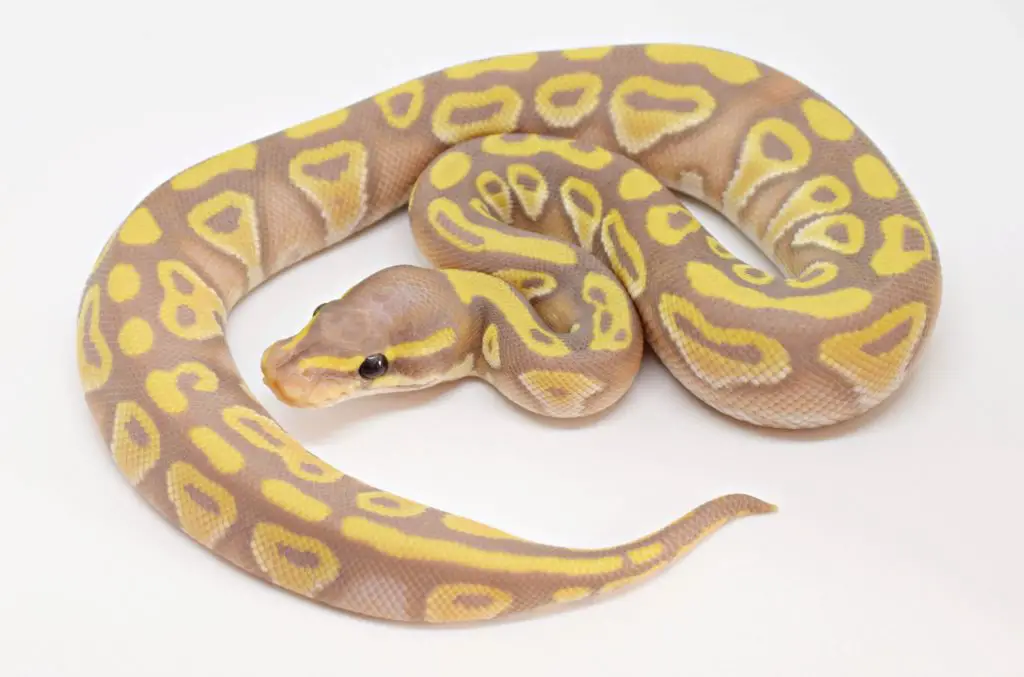
Conclusion
Generally speaking, pet Ball Pythons grow quickly in their first few years and reach full size by 4 years of age at the latest. Nonetheless, there are lots of factors that affect growth.
Keeping and breeding this species is a long game, after all. For consistent healthy growth, you must pay attention to giving your snake the proper care it needs. Month after month, year after year. If you pay particular attention to temperature and feeding frequency, then your snake will grow at a healthy rate.
As always, monitor your Ball Python for signs of stress. If it fasts before reaching sexual maturity (anywhere from 18 months old), then reach out to other keepers, and use the resources from this site to make sure your husbandry is perfect.
Also on this topic:
For more on Ball Python size in general:
Back to the Ball Python size page
